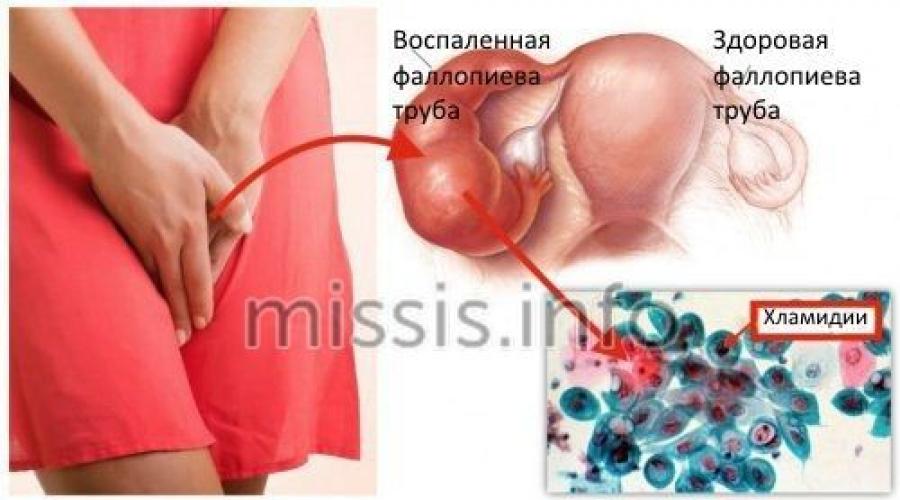Yellow-green discharge, odorless in women

Transparent or milky in color, of a homogeneous consistency and odorless - the norm for vaginal discharge looks just like that. Any mismatch signals a pathology. What disorders are indicated by yellow-green odorless discharge in women and how to return a healthy balance to the vaginal environment?
sign of infection
The yellow-green discharge that has caused you anxiety and discomfort is common to several diseases. The color of whiter is usually affected by various infections. Which one did you get?
Chlamydia
Sexually transmitted chlamydia on its way to taking over the world. Already a billion people have been diagnosed with chlamydia. The danger is that it acts without pronounced symptoms. There is a pulling pain in the genitals, in which burning and itching are felt from time to time. On the linen, you can see a purulent-colored mucous discharge, very similar to yours. But with chlamydia, they usually have an unpleasant odor.

Trichomoniasis
Trichomonas are even more common among the world's population. Interestingly, the pathogen lives only in the genitourinary system. In women, it causes pain during urination, redness of the external genitalia. The characteristic abundant yellow discharge is explained by purulent clots, from which there is also a pungent odor.

Gonorrhea
The gonococcus that enters the body first affects the mucous membrane of the vagina. But the disease can be manifested by discharge of a purulent color, a tickling sensation, pain in the urethra only after a week. Pathogenic bacteria gradually occupy the genitourinary system, provoking various inflammations.

Bacterial vaginosis
With this disease, beneficial vaginal lactobacilli are replaced by pathogenic gardnerella and various protozoa. Sometimes due to a decrease in the body's defenses or a failure of hormones. Therefore, it can occur so often during pregnancy.
Imagine that one woman pathogenic flora of the vagina can create up to 200 bacteria, moreover, the composition of each representative of the fair sex is unique. It is impossible to reveal it completely. If at the initial stage of an infectious disease a white secret is secreted from the vagina, then the neglected form is characterized by yellow-green with the smell of rotten fish.

The question of how these diseases are transmitted is very controversial. We are accustomed to believing that, in addition to bacterial vaginosis, it is only possible to become infected with them during sex. But it turns out that the risk of household microorganism exchange is just as high.
An abundance of sweets in a woman's diet contributes to the creation of a favorable environment for pathogenic bacteria and fungi.
The symptoms of the above infections are as similar as the causes of infection. These are unpleasant sensations in the external genital organs that itch and burn, inflammation and pain in the perineum. The discharge is liquid, sometimes thick and slimy, but not cheesy. The normal color of whiter changes to yellow and yellow-green.
But what prevents us from assuming the presence of one of the diseases in you? The smell is sharp and unpleasant, which occurs as a product of the vital activity of microbes. Therefore, we exclude infections from the list of suspected diseases.

sign of inflammation
Inflammatory processes can occur in different parts of the female reproductive system. Hence their name:
- vaginitis- in the mucous membrane of the vagina;
- salpingoophoritis- in the appendages of the uterus;
- cystitis- in the bladder;
- cervicitis- in the cervix;
- endometritis- in the mucous membrane of the uterus;
- urethritis- in the urethra.
The general clinical picture of the diseases is similar. Patients complain of abundant discharge of purulent mucus, severe pain, hyperemia and swelling of the mucous membranes, burning. Do these symptoms match yours? Then you need to understand why the inflammatory processes appeared.

Causes of inflammation
By themselves, inflammatory processes do not occur. Who or what is their provocateur?
Infectious diseases. This is the most common, but not the only cause of inflammation. Bacteria, viruses and fungi, multiplying, affect the female organs with their destructive activity and cause diseases against the background of reduced immunity.
Hormonal disorders. Contribute to an imbalance of hormones, and in particular low estrogen production, obesity, menopause, diabetes. It is also possible for the same reason in pregnant women.

Injuries. Organs can be affected during childbirth, abortion, caesarean section, and other surgical procedures.